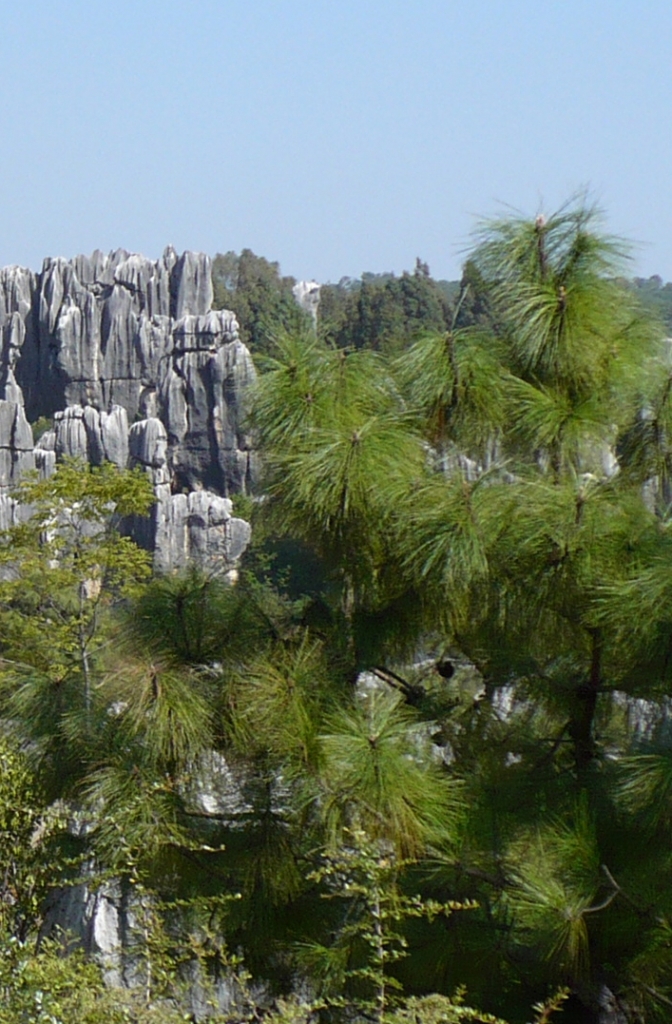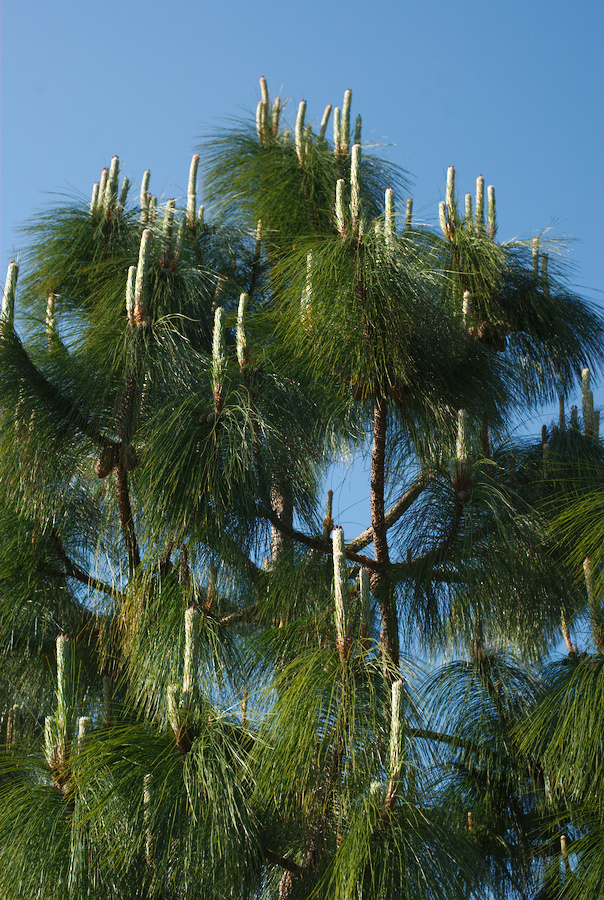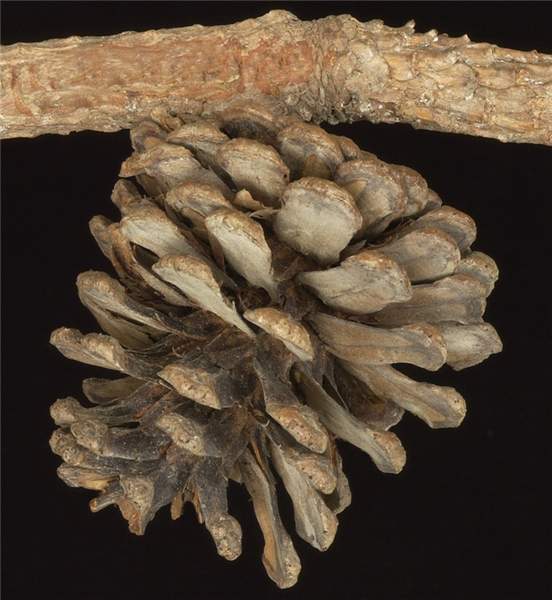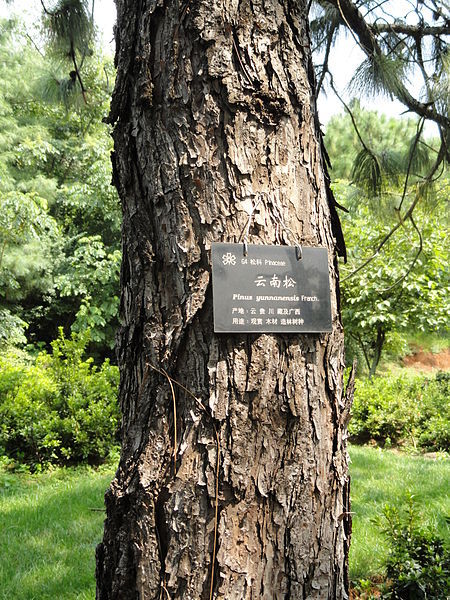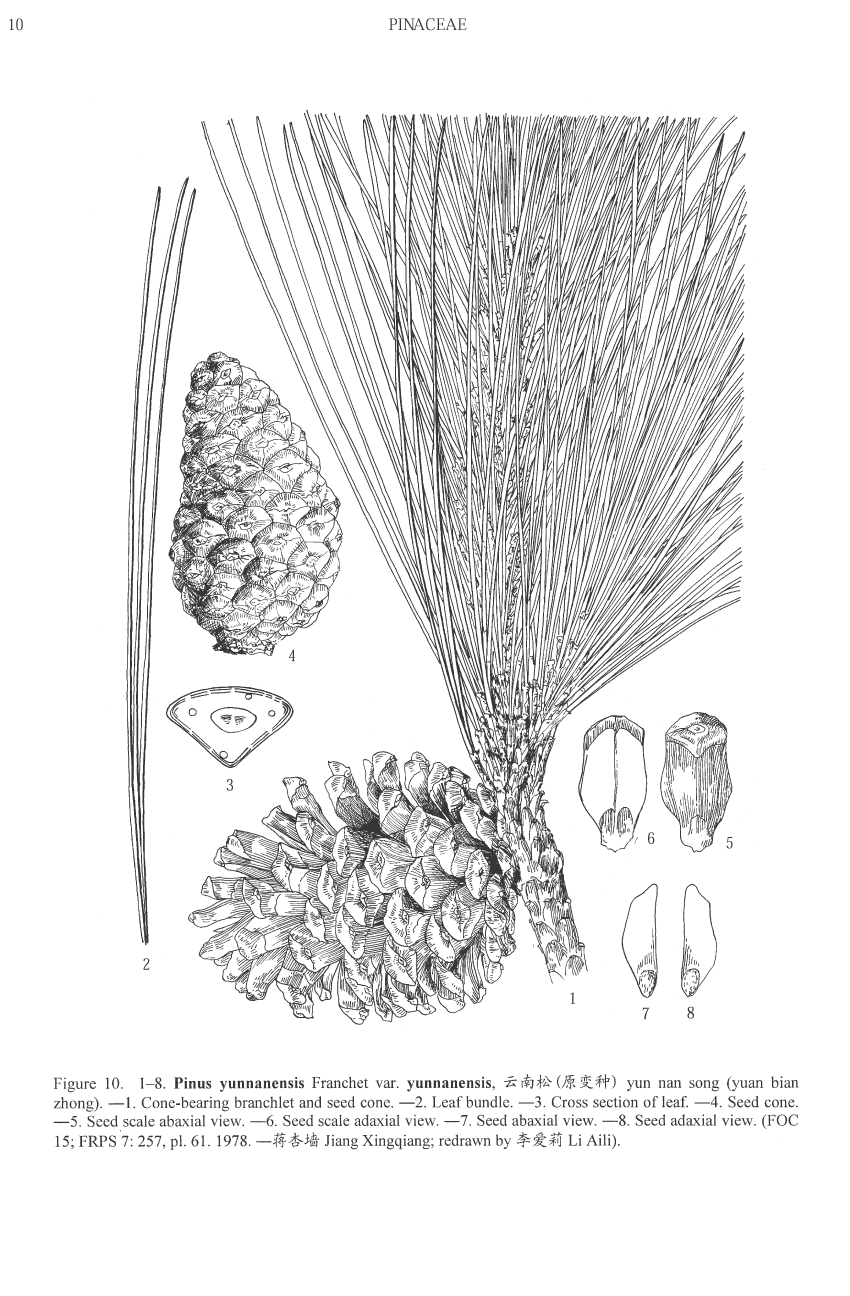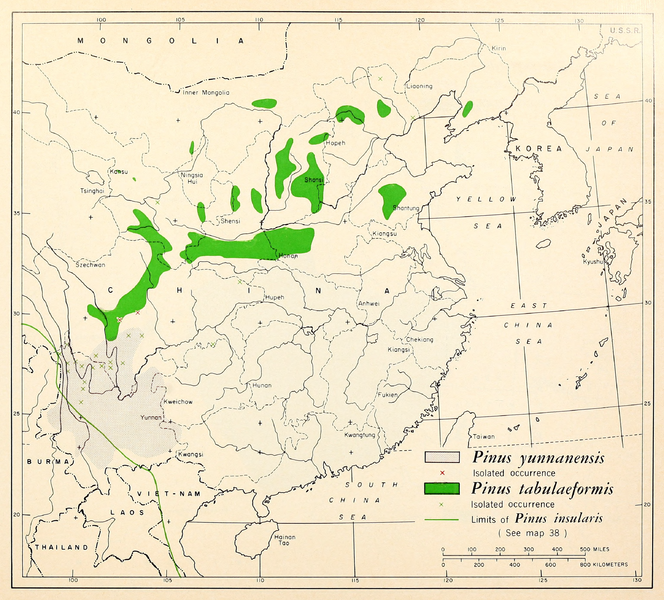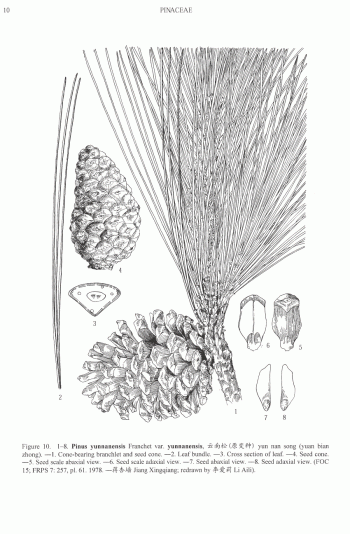
subgenus Pinus, section, Pinus, subsection Pinus. This is one of the 'œclassic' old-world, 2-needled, hard pines.
Pinus yunnanensis, as described in 1899 by Adrien René Franchet (1834-1900), in Journal de Botanique (Morot), vol13(8), is commonly known as Yunnan pine; as well as 云Š—æ¾ (yun nan song) in the Chinese language. This conifer is local to the mountainous regions of China's southwestern Yunnan province, hence the species name.
Ethnobotany. The timber is used for construction, railway sleepers, boards, furniture, and wood pulp. The trunk can be used as a source of resin, the roots for cultivating fungi, and the bark for producing tannin.
Description. Yunnan pine is an evergreen, coniferous species of tree that grows to mature heights of 100 feet (30 m), or shrub-like in areas where forest fires are frequent. Trunk diameter is up to 40 inches (1 m) wide, measured at breast height. Crown is dense and broadly conical, eventually flattening with age.

Distribution. This species is native to China, predominantly at elevations of 2,000 to 10,000 feet (600 - 3,000 m) above sea level on the high plateaus of Yunnan province, but extending north into Sichuan, where it intergrades with P. tabuliformis, and south into northern Burma, where it intergrades with P. kesiya. In recent times it has extended its range as competing broadleaf forests are logged.
Hardy to USDA Zone 8 - cold hardiness limit between 10° and 20°F (-12.1° and -6.7°C).
